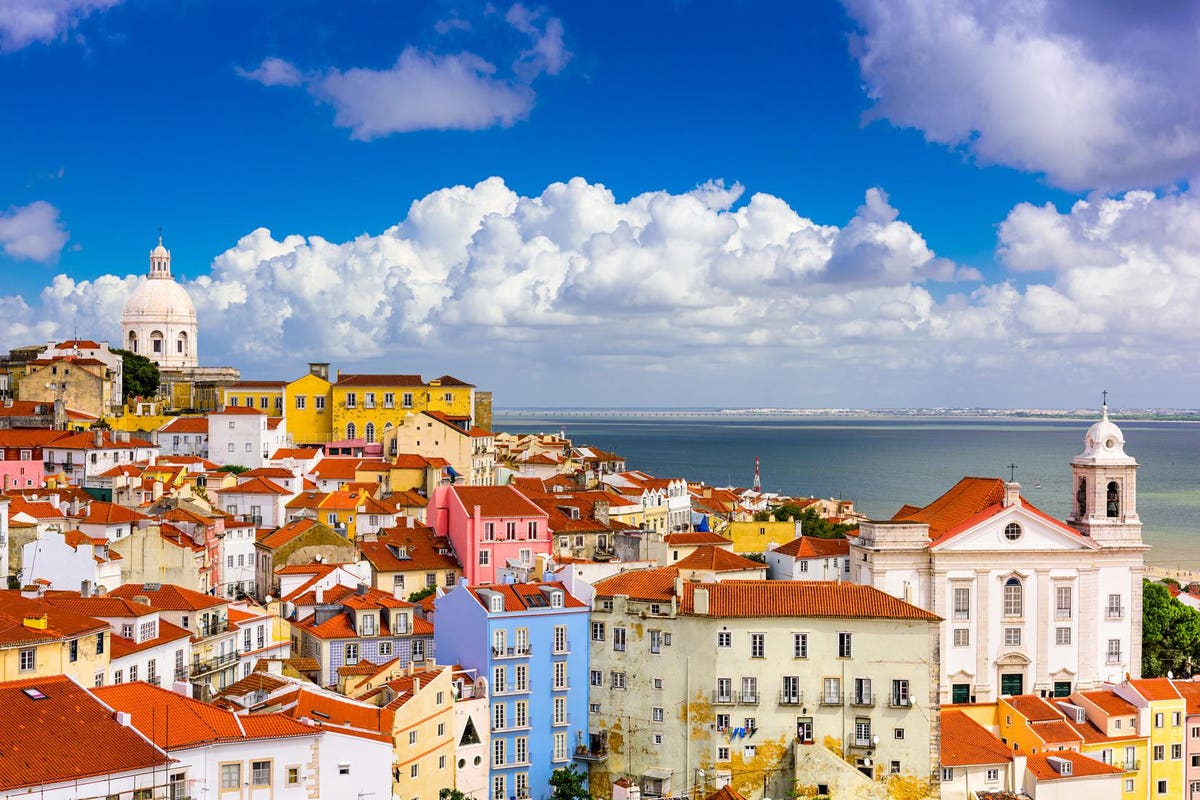Unless you’ve been living under a rock, you should be well aware that the global economy has been going through some turbulent times since the outbreak and worldwide spread of the pandemic in 2020. Amid the economic disruption, however, several countries managed to display remarkable growth in their GDP per capita from 2020 to 2021. Using data from The World Bank, we analyzed various nations’ GDP per capita (in constant 2015 dollars, which therefore incorporates inflation) and their change over the years. For this story, we decided to focus on Spain and Portugal their GDP per capita over time.
Iberia Versus the European Union
According to the latest data from The World Bank, the GDP per capita for the European Union was $32,828.55 in constant 2015 U.S. dollars. Spain and Portugal, which are members of the European Union, both trailed this figure significantly. As of 2021, Spain’s GDP per capita was $26,125.87, while Portugal’s was $20,831.09. Both of these figures are the lowest for western European states in the EU. Even Malta, notably, had a higher GDP per capita in 2021, at $27,891.13.
Historical Trends in Portugal and Spain GDP per Capita
Both Spain and Portugal experienced historical peaks in GDP per capita in 2019: For Spain, it was $28,087.90, and for Portugal, it reached $21,617.41. The onset of the pandemic, however, in 2020, sent these figures plunging to $24,785.45 and $19,802.23, respectively.
To a large extent, the GDP per capita trends for Spain and Portugal, over the years, are very similar. Indeed, the political histories of these two countries are similar as well, with quasi-fascist, right-wing authoritarian regimes leading the countries from the 1930s to the mid-1970s. Both Spain and Portugal benefited from the general post-World War II economic boom, which ended roughly in the 1970s. From 1960 — the furthest back The World Bank tracks GDP per capita for — the GDP per capita of Portugal rose by 150% to 1974, from $3,934.94 in 1960, it reached $9,837.62 by 1974 (in constant 2015 dollars). In Spain, over the same period, GDP per capita rose by 126.6%, from $6,215.04 in 1960 to $14,085.71 in 1974.
The 1970s were a pivotal decade for the global economy, the U.S. economy, and the economies of Spain and Portugal in particular. In 1973, according to the Nation Bureau of Economic Research (NBER), the American economy entered a 16-month recession that lasted until 1975, and was at the time, the longest business contraction since the Great Depression. U.S. GDP per capita fell year-over-year by 1.45%, from $28,114.87 in 1973 to $27,708.57 in 1974 and then again by 1.18%, from $27,708.57 in 1974 to $27,380.34 in 1975 (in constant 2015 dollars).
Meanwhile, in Spain, the year 1975 saw the death of the multi-decade authoritarian caudillo Francisco Franco and the transition of the Spanish regime to democracy. From 1974 to 1975, Spain GDP per capita fell by 0.54%, a negligible amount compared to the U.S. at the same time. But it was the first year-over-year period of negative growth in GDP per capita since at least 1960. In 1974, a similar authoritarian regime, the Estado Novo in Portugal, also came to an end in the Carnation Revolution, and would transition into the Third Portuguese Republic in 1976. Unlike Spain, the transition from authoritarianism to democracy in Portugal witnessed dramatic drops in GDP per capita. From 1973 to 1974, Portugal’s GDP per capita fell by 0.26%, before plummeting by 7.91% from 1974 to 1975.
The early-1980s were a rough time for much of the globe economically, and Spain and Portugal were very much caught up in this. But after these choppy seas, GDP per capita in both Portugal and Spain increased massively over the rest of the 1980s, then really leapt upward in the 1990s economic boom. Finally, in the late 2000s, amid and closely intertwined with America’s housing bubble and the global financial boom it fueled, GDP per capita in Portugal and Spain peaked: At $27,218.45 in 2007 in Spain, and at $19,985.70 in 2008 in Portugal. By comparison, the U.S. GDP per capita in 2008 was $53,854.16 (in constant 2015 dollars).
Below is a table detailing the annual growth rates in GDP per capita for Portugal, Spain, and the U.S. since 1960:
Portugal and Spain During the Global Financial Crisis and After
Both Portugal and Spain, not to mention most of Europe, was caught up in America’s housing bubble from 2004 to 2007. Indeed, Spain experienced its own domestic housing bubble, which burst in 2008. That year, much of Spain, especially Andalusia, was filled with empty houses and apartments as well as unsold construction projects, according to Bloomberg. From 2007 to 2013, according to Quartz, Spanish home prices fell by 37%.
Portugal was one of the hardest hit national economies during the Global Financial Crisis and Eurozone sovereign debt crisis. Even before the onslaught of the Great Recession, from 2002 to 2003, Portugal’s GDP per capita fell by 1.3%, something that did not occur in either Spain or the U.S. at the same time. However, with the onset of the Global Financial Crisis, Portugal’s already precarious balance sheet was completely disrupted. Portuguese government debt-to-GDP ratio sharply rose from 72.7% in 2007 to 114.4% in 2011, according to Pordata. Not coincidentally, the worst year-over-year period of growth in GDP per capita in Portugal was from 2011 to 2012, when it declined by 3.67%. The only other period to match or exceed that decline would be 2019 to 2020, but almost every country experienced a fall in GDP per capita then because of the pandemic’s economic havoc.
While Portuguese gross debt as a percentage of GDP still runs very high, at approximately 110.8% as of 2023, per capita GDP had recovered from the stormy waters of the 2010s, before the pandemic sent it plummeting in 2020. Below you’ll find a table detailing the GDP per capita of Portugal, Spain, and the U.S. from 1960 to 2021 in constant 2015 dollars:
Read the full article here




